
norberto iera
CRITICS
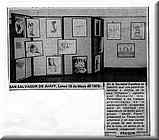 70052101 |
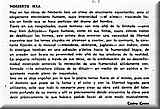 72052101 |
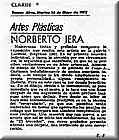 72052102 |
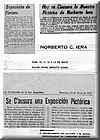 73052101 |
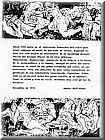 73112101 |
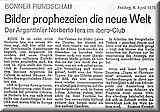 75042101 |
 75042102 |
 75042103 |
 75112101 |
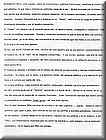 76072101 |
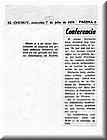 76072102 |
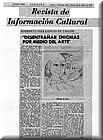 76072103 |
 76082101 |
 76082102 |
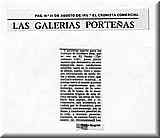 78082102 |
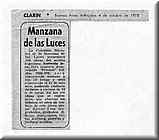 78102101 |
| NORBERTO IERA AND THE INESCAPABILITY OF DRAWING Jonathan Allen The italo-argentinian artist Norberto Iera, consummate master of the print, has just visited Las Palmas, bringing to our shores not only a vast array of coloured ink drawings and prints of all kinds but some intriguing images that are the consequence of research at the Bonn Centre for the Sciences. During the current month the most recent tendencies of his drawing will be on show, an image that breaks into abstract pattern and design, but which is rooted in drama, pyshic introspection and surrealist automatism, and which has a fundamental figurative dimension. His first individual exhibition dates from 1968, at Rego Park, New York. He shows frequently in that city at the beginning of the seventies, at the Brewster Gallery, (1973), Automation House Gallery, (1973). In 1974 he exhibits solo in Buenos Aires, his native city, (at The First Bank of Boston). The following year it will be in Italy, (Galleria d'Arte Nouvo Spazio II, Venice). In 1979 he is awarded the First National Print Price of Argentina and shows at the Dolfin Gallery of Milan. Two years after he is invited as choreographer to the Bonn Opera, Germany. In 1984 ten long years of research into new printing techniques bear fruit, a period during which he has worked with unusual surfaces. 100 works on paper is the title of the compilation of images that mark this fundamental creative era of his career, supported by the Bonn Centre for the Sciences. In the first years of the eighties' decade he exhibits in various german cities like Frankfurt and Bitburg, and in 1988 he shows at the Palazzo Caputo, in Ruvo di Puglia, Italy. He will exhibit again in Buenos Aires at the beginning of the 90's, (Sala Alberdi, 1992) and in 1997 he is invited to participate in the prestigious forum of the Habana Biennial, (VIth edition) and in the itinerant exhibition organized by UNESCO, Les Sciences dans l'art. Man and theatrical pose, woman and her gestures, the collective lot of mankind, a great flux and reflux of archetypes and semi-mythical beings dominate the initial phases of his artistic production. Much of this vast drawing scheme takes the form of a new Commedia dell'Arte. He continues the rich tradition of seventeenth century french artists, similarly enchanted by the type-cast characters of italian popular satire, such as Jacques Callot, Antoine Watteau and Nicolas Lancret. Simultaneously Iera advances into the realms of abstract lyrical landscape, a naturalism that emerges from automatic and gestual immediacy. This corpus of classical theatrical references then leads on to new typologies and dramatic situations whose protagonists are no longer stock creatures but fantastic and angelical beings. Iera explores sexual polarity through nude drawings and anatomies that are created by the rhythms of the plotter. In this equally long series, Erotic Molecules, the features of the drawing evoke Beardsley's aesthetic and the psychedelic erotic abstraction of the Flower Power years. Psychodelics and its curvateous formative rhythms determine much of this abstract eroticism that never becomes explicit sexuality but remains in metaphysical limbo, in a William Blake like manner, and in a William Blake like ethereal use of light tonalities. Following the romantic lead, Iera moves upwards to
explore the Celestial Spheres of Heaven, where his angels fly and
fall to precipitous human fate. Strangely and naively religious,
his imaginary defies easy categorization, it is intensely contemporary
by technique but timeless and archaic in its narrative of the sublime.
This exuberant and multifaceted symbolic world is now being enclosed
in boxes, Iera's recent tendency to containment and encapsulation.
Once again the surface of his imaginary world is subjected to a
kind of cinetic rhythm that breaks even image.
Personale di Norberto Iera Il pittore argentino a Corato -Bari- ha esposto le
sue opere a Palazzo san Cataldo Giuseppe Faretra |
|
|---|---|
| |
|